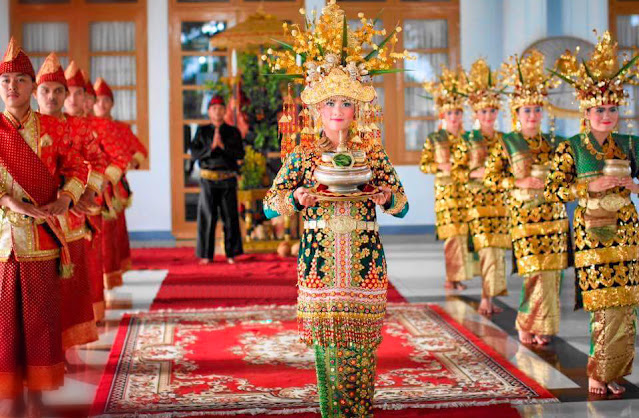The Rejang Tribe's Kejei Dance
 |
| Kejei Dance |
Kejei dance is a Rejang folk art that is performed during traditional ceremonies or the Rejang tribe's biggest celebration. This Kejei dance appears to indicate that the most important celebration aims to improve one's abilities.
As part of a traditional ceremony, they slaughter a buffalo, goat, or cow. Young people perform the dance in the middle of the countryside, usually at night. This dance is only performed at large ceremonies such as harvest, dancing to welcome great guests, or parties such as weddings (Kemtuk), circumcision (temtok puguk), piercing the ears of baby girls, and releasing vows or oaths (mpas sot sangei). As a result, carrying out the tradition takes a long time that must be planned in advance, because doing Kejei activities involves many people and several conditions that must be met, as well as binding rules to perform Kejei dance.
The Kejei ceremony is a difficult task for a small group of people, so the word "Kejei" means "Work," and the Kejei dance was originally called Ta'ei Jang, and this dance was performed at the time, a big party called a wedding was taking place Monk Bermano with Princess Leisure.
Biku Bermano is the leader of monks in modern history. Biku Bermano came from the Majapahit Kingdom (Java) with three brothers, each named Biku Throughout Jiwo, Biku Bejenggo, and Biku Bembo. They are Buddhist monks, but they are not siblings. They only have kinship relationships in religious schools in the Majapahit Kingdom. Their arrival was intended to spread Buddhist religious teachings.
During Biku Bermano and Putri Senggang's wedding, there was a Penei in the middle of the dancers, acting as a barrier between female and male dancers. Penei is a symbol of Kutei, a symbol of prosperity for the Rejang, and a symbol of prosperity for the Rejang. Penei is divided into two types in the Rejang tribe: Penei for meket pai (binding rice) and Penei for other purposes. Ceremonial purposes, such as performing gung kecintang and kejei dances at traditional ceremonies.
Marriage customs are an embodiment as an expression of feelings of respect and dignity in the Rejang community, with a wedding procession to participate in upholding customs whose implementation will reflect the social status of the family hosting the celebration.
Thank you, I hope you find it useful, and please accept my apologies for any shortcomings. Finally, congratulations.
